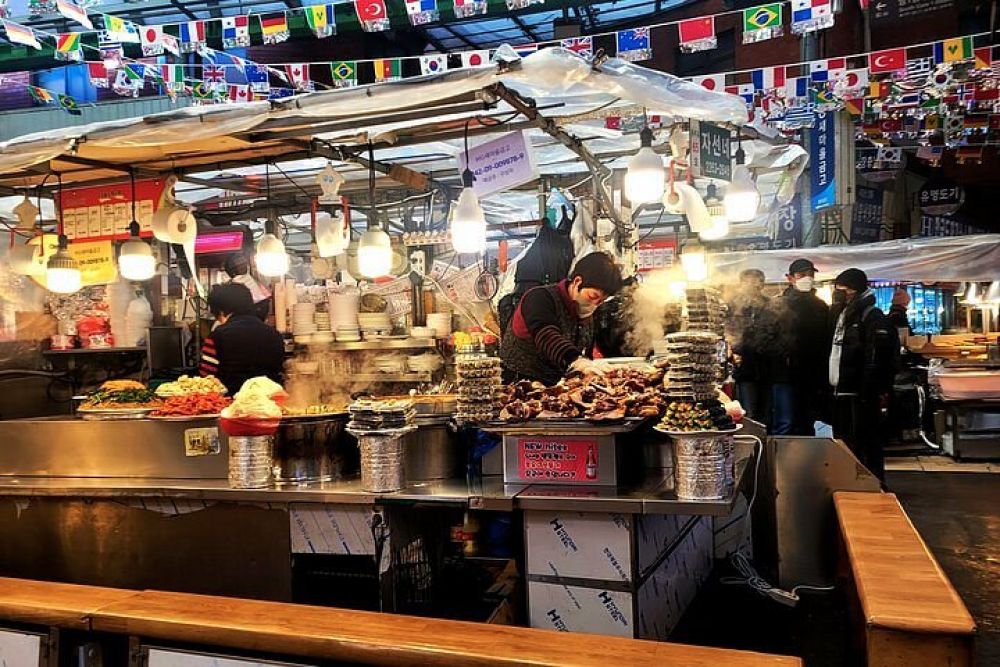

Gwangjang Market, renowned as one of Seoul's oldest and largest traditional markets, has become a prominent destination for both local and international visitors. Since its establishment in 1905, the market has played a crucial role in the daily lives of Koreans, offering a wide range of products including textiles, clothing, and food. Initially, the market's primary focus was the selling of agricultural products and textiles, but it has since evolved into a cultural hotspot.
In the 1980s and 1990s, with Korea's rapid economic development and the country opening up to international tourism, Gwangjang Market began to attract tourists looking for an authentic Korean experience. Visitors came to sample traditional Korean street food, such as Bindaetteok (mung bean pancakes) and Mayak Gimbap (narcotic seaweed rice rolls so-called for their addictiveness), and to explore the vibrant array of stalls selling hanbok (traditional Korean clothing) and other handicrafts.
Tourism at Gwangjang Market saw a significant increase with the global spread of the Korean Wave, or Hallyu, in the early 2000s. This cultural phenomenon, driven by the popularity of Korean dramas and K-pop music, sparked increased international interest in all aspects of Korean culture. As a result, Gwangjang Market became featured in various travel guides and television shows, such as the popular Netflix series "Street Food: Asia", further boosting its global recognition.
In recent years, Gwangjang Market has embraced modern trends without losing its traditional appeal. The latest trends in the market's tourism include:
Through its blend of tradition and modernity, Gwangjang Market continues to thrive as a cultural landmark in Seoul, offering a unique experience that reflects the vibrant essence of Korean life and history. For travelers seeking to immerse themselves in local culture and cuisine, Gwangjang Market remains a must-visit destination.